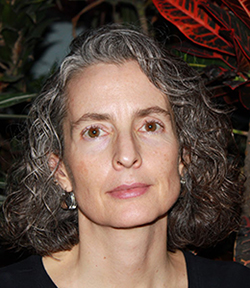With dozens of brightly colored origami figures decorating the shelves and sketches covering the whiteboard in the corner, Catherine Searle’s office looks more like an art studio than a space to do fundamental research in mathematics.
Searle’s field of study has a bad rap, a fact of which she is fully aware.
“I get it – Math can be terrifying at times,” Searle, professor of mathematics, said. “But there’s so much to discover and create, and there’s still so much to solve.”

Catherine Searle
To solve requires time, patience and, perhaps surprisingly, extensive collaboration. Searle’s nearly $680,000 in grant funding from the Simons Foundation and National Science Foundation have enabled her to expand her collegial network by attending multinational conferences. Since starting at Wichita State, she has been a guest speaker for 74 seminars, colloquiums and conferences.
“Meeting people and hearing them explain their work: That’s essential for good research,” she said. “Attending conferences helps you keep up with the body of literature which is constantly expanding. "Her grants also provide support for her Wichita State graduate students; currently, she has a master’s thesis student and PhD candidate at WSU, as well as a PhD student she co-supervises with a colleague at Oregon State University.
“I’m a lifelong learner, so it excites me to be around others who are motivated to continue learning,” Searle said. “My students inspire me to keep exploring mathematics.”
Searle explores differential geometry, specifically classifications of positively and non-negatively curved Riemannian manifolds. Thirty years after publication, her dissertation, “Positively curved manifolds with maximal symmetry rank,” a seminal work in her field, continues to be a valuable resource in the symmetry program, a subfield of differential geometry, in which she is a leading expert. In a more recent publication, she and colleague Christine Escher from Oregon State University resolved a conjecture for torus actions of maximal symmetry rank on non-negatively curved manifolds in dimensions up to and including nine. They also developed an important tool they expect will be useful in resolving the conjecture in all dimensions.
“Often, people measure the importance of research by its immediate applicability,” Searle said. “But pure curiosity is the engine that has gotten us where we are now. The future of science, technology, engineering and mathematics rely on curiosity, on pure fundamental research.”

